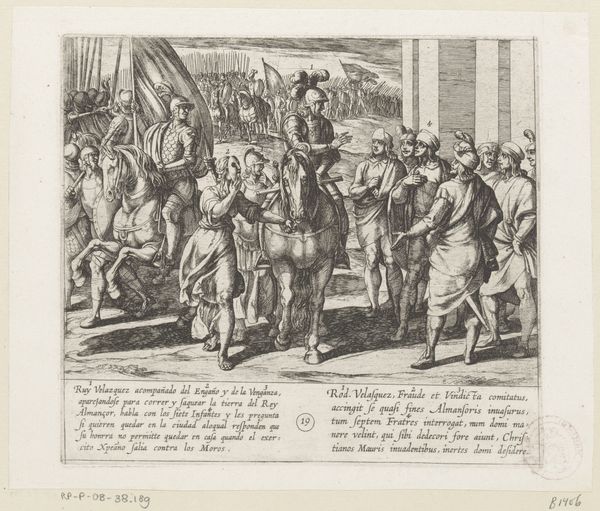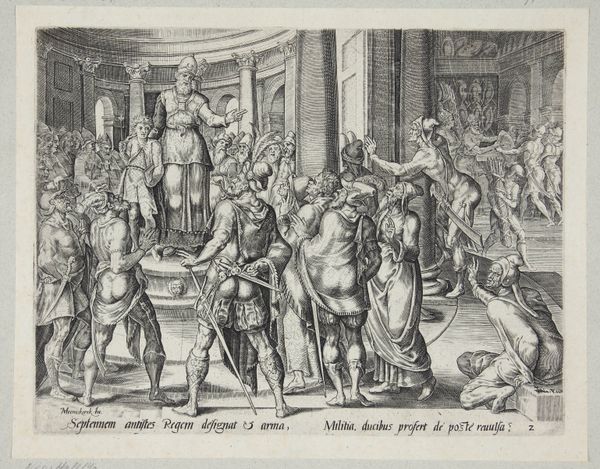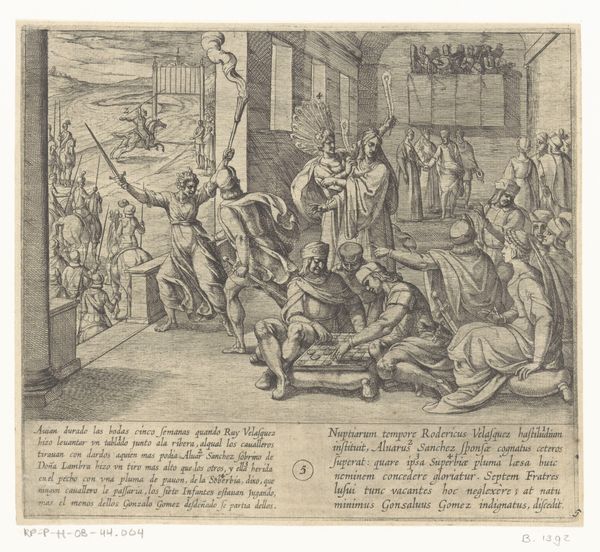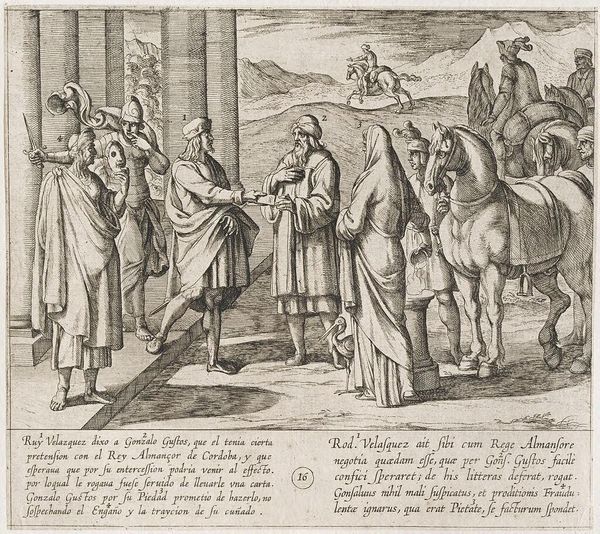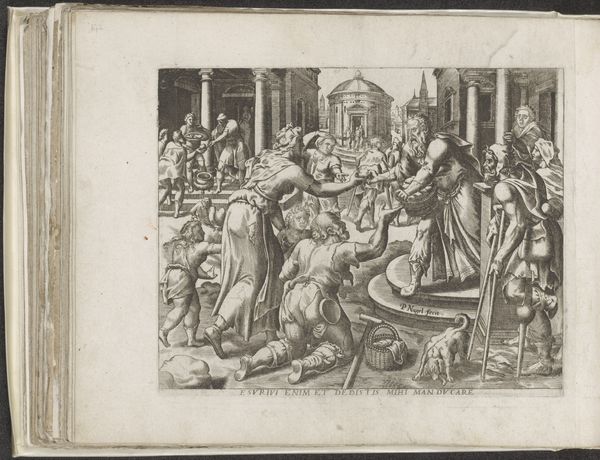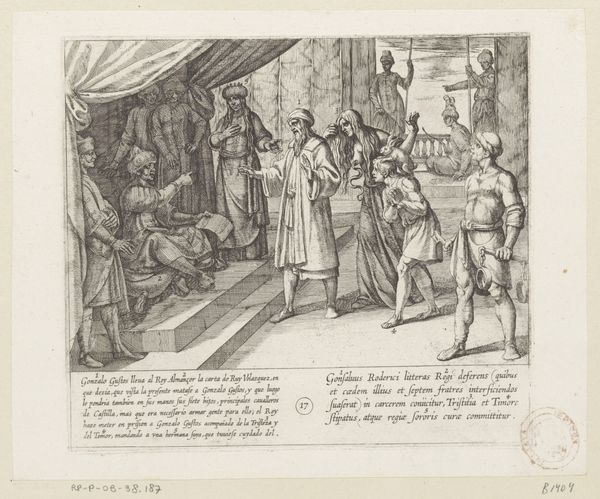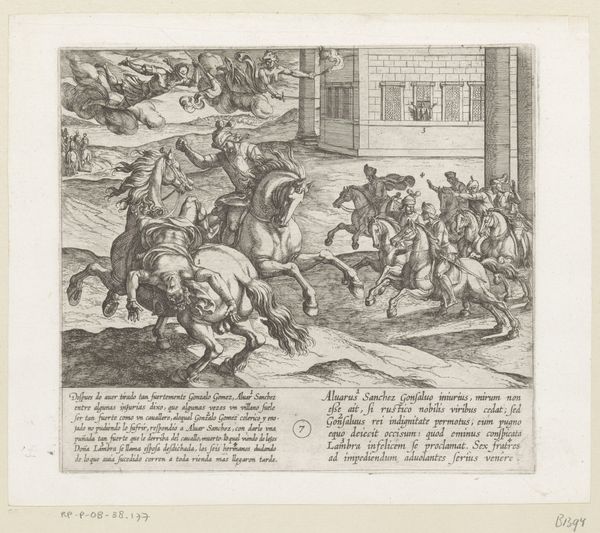
Gonzalo Gustos bezoekt Ruy Velazquez om genoegdoening te beloven voor de daden van zijn zoon 1612
0:00
0:00
print, engraving
#
narrative-art
#
baroque
# print
#
old engraving style
#
figuration
#
line
#
genre-painting
#
history-painting
#
engraving
Dimensions: height 185 mm, width 206 mm
Copyright: Rijks Museum: Open Domain
Curator: Today we're looking at "Gonzalo Gustos bezoekt Ruy Velazquez om genoegdoening te beloven voor de daden van zijn zoon," an engraving created by Antonio Tempesta in 1612. It's currently held at the Rijksmuseum. Editor: My first impression is one of carefully orchestrated drama. There's a powerful sense of both theatricality and deep foreboding in the detailed lines. The rendering seems stiff, especially given the scene. What are the tangible characteristics of this particular print? Curator: As an engraving, the line work is achieved by cutting grooves into a metal plate, inking it, and then pressing it onto paper. It allows for precise detail and mass production, spreading this visual narrative far and wide. You can almost feel the labour of the engraver meticulously carving each line to bring this story to life, a repetitive action which is integral to the message it's presenting about cycles of violence and justice. The print-making medium inherently disseminates the content, echoing the distribution of blame, revenge, justice that occurs in the artwork and probably within the broader, contemporaneous public context. Editor: The symbols certainly contribute to that foreboding. We have this central figure flanked by justice, and pity while they petition a figure who holds a book or legal text. A cloaked person retreats behind the figure to the right of the petitioner. The petitioner himself almost seems to want to recede. The theatrical quality really stands out in this staged space in which they all convene. Note that an eye peers down on the group from a room atop of a covered corridor filled with a procession of soldiers. I wonder, what might they all mean? Curator: The mirroring composition and calculated poses reinforces the symbolic content of this piece, really distilling into something like an emblem about revenge, and the socio-political performance related to conflict resolution. The line style definitely echoes old engravings, making me believe Tempesta may have been referencing print and painting styles from decades prior. The production would, for Tempesta's viewers, feel antique or classicising, thus providing a sense of legitimacy for his message. Editor: Agreed, and from my perspective, Tempesta is inviting us to reflect on how cultural memory can become embedded in visual symbols, shaping the way we understand conflict and morality. What a fascinating way to examine justice, the artist offers more than a simple illustration, it invites contemplation. Curator: Absolutely, by paying close attention to both the materials used and their historical social-cultural resonances. The artwork prompts a wider meditation about historical, socio-economic relations. Editor: Thank you. This engraving provides insights into past societies and how they chose to grapple with complex societal issues, that linger throughout our collective histories.
Comments
No comments
Be the first to comment and join the conversation on the ultimate creative platform.





